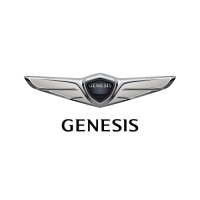5
/
If you should nd any cuts, rips or holes,
please refrain from riding! First have your bicycle
checked over by a specialist.
Before each ride
Before every ride, please check that:
• The lights and bell are working and safely se-
cured
• The brakes are working safely and are prop-
erly secured
• The cables and ttings are not leaking if you
have a model with hydraulic brakes
• The tyres are free of foreign objects and dam-
age, and the rims are not damaged and run
true,
particularly after riding off road
• The tyres have a sufcient tread depth
• The suspension components are working
properly and are safely secured
• The screws, nuts, through axles and quick
releases are rmely placed (see page 10 and
34).
• There are no deformations or cracks on the
frame and fork.
• The handlebars, stem, seat post and seat are
both correctly and securely fastened as well as
set up in the right position
• The seat post and seat are secure. Try turning
the seat or tipping it upwards or downwards. It
should not move.
• If you are using clipless/magnet pedals, please
check that they are working properly. The ped-
als should release easily and smoothly.
• For BMX bicycles: Safe operation of the rotor,
safe attachment of the handlebars to the stem
and of the axle pegs.
If you are unsure of whether your bi-
cycle is in a sound technical condi-
tion, take it to a specialist retailer to
be checked instead of riding it!
It is particularly important if you use your bi-
cycle a lot, either through sports riding or daily
use, that you regularly have all the important
parts checked by a specialist retailer.
Frame and fork, suspension components
and other parts relevant to your safety such
as brakes and wheels are subject to heavy
wear, which can impact the operating safety
of these parts.
If you use parts for longer than their intended
lifetime, these can fail without warning, which
can in turn lead to falls and serious injury!
Please make these checks before
continuing after a fall or if your bicy-
cle falls over!
Aluminium parts cannot be safely bent back
into shape, while carbon components can
sustain damage which is not recognisable to
the eye.
Allow the bike to be checked by a specialist
retailer.
Check the entire
bicycle for dam-
age. It could have
dents and cracks
in the frame and
the fork as well as
bent components.
When parts of the
handlebars or the
seat were shifted
or twisted, the respective parts must be checked
for functionality and safe attachment.
• Look carefully at the frame and the fork. Defor-
mation can usually be seen quite clearly when
you look at the surface from different angles.
• Look whether the seat, seat post, stem or
handlebars are still in their correct position.
Do NOT twist or bend the component from
its changed position without opening the re-
spective screw connection. It is essential that
you adhere to the fastening torque prescribed
when fastening the components. The appro-
priate information can be found on page 34
and in the Chapter “Quick release”, page 10.
• Check whether both wheels are correctly and
securely attached to the frame and the fork.
• Lift the front wheel and turn it and then lift
the rear wheel and turn it. The rim must run
straight and centrally through the brakes. The
tyre may not touch the brakes. The distance
between the frame or the fork and the tyre in-
dicates whether a wheel runs in a central posi-
tion in bicycles with disk brakes.
• Test whether both brakes have full functionality.
If you have fallen

